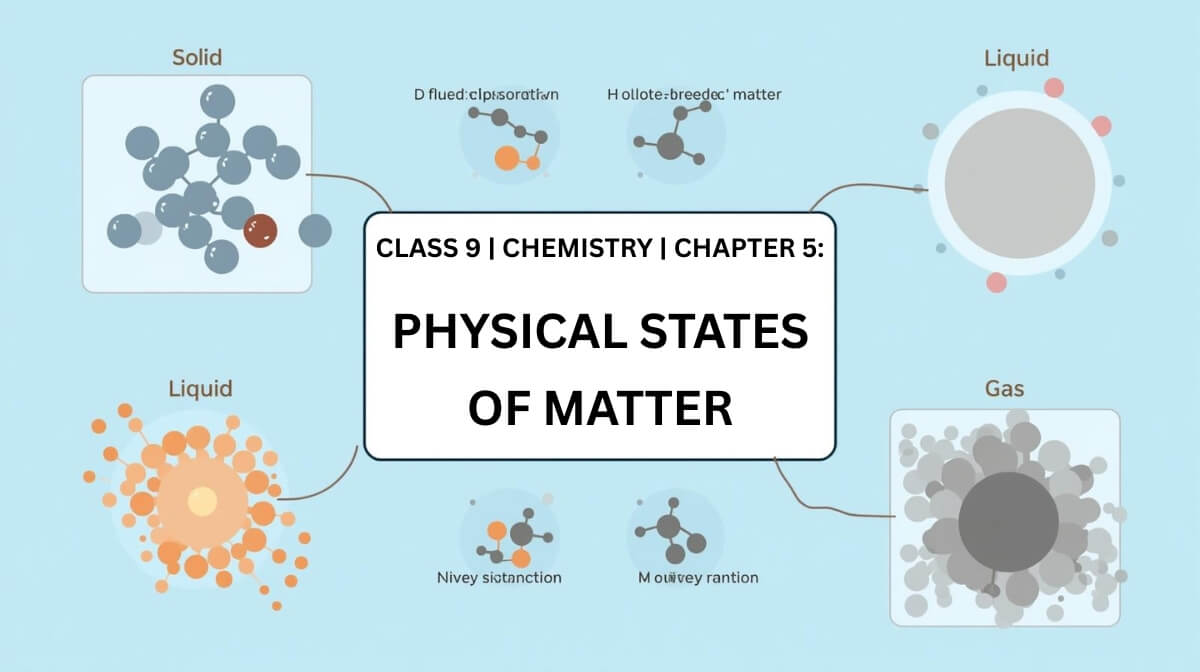Physical States of Matter explains the basic forms in which matter exists — solid, liquid, and gas — along with their properties, behavior, and changes of state. These Class 9 Chemistry Chapter 5 MCQs are designed to help students test their knowledge on key concepts such as intermolecular forces, kinetic theory, diffusion, evaporation, and the effect of temperature and pressure on different states of matter.
1. Which of the following is a characteristic property of solids?
- A. Definite shape and volume ✅
- B. Definite volume but no definite shape
- C. No definite shape and volume
- D. Easily compressible
2. Which state of matter has the weakest intermolecular forces?
- A. Solid
- B. Liquid
- C. Gas ✅
- D. Plasma
3. The process of a solid changing directly into a gas is called:
- A. Condensation
- B. Evaporation
- C. Sublimation ✅
- D. Melting
4. Which factor increases the rate of evaporation?
- A. Low temperature
- B. High temperature ✅
- C. Low surface area
- D. High humidity
5. The random motion of gas particles is explained by:
- A. Law of Conservation of Mass
- B. Dalton’s Atomic Theory
- C. Kinetic Molecular Theory ✅
- D. Avogadro’s Law
6. What happens to gas pressure if temperature increases at constant volume?
- A. It decreases
- B. It increases ✅
- C. It remains the same
- D. It becomes zero
7. Which state of matter is nearly incompressible?
- A. Gas
- B. Liquid ✅
- C. Plasma
- D. Vapor
8. The diffusion of a gas is faster when:
- A. The gas is heavy
- B. The gas is light ✅
- C. Temperature is low
- D. Pressure is high
9. Which change of state is involved when water vapor turns into liquid water?
- A. Condensation ✅
- B. Evaporation
- C. Melting
- D. Freezing
10. The boiling point of a liquid is affected by:
- A. Shape of the container
- B. Color of the liquid
- C. External pressure ✅
- D. Type of thermometer

